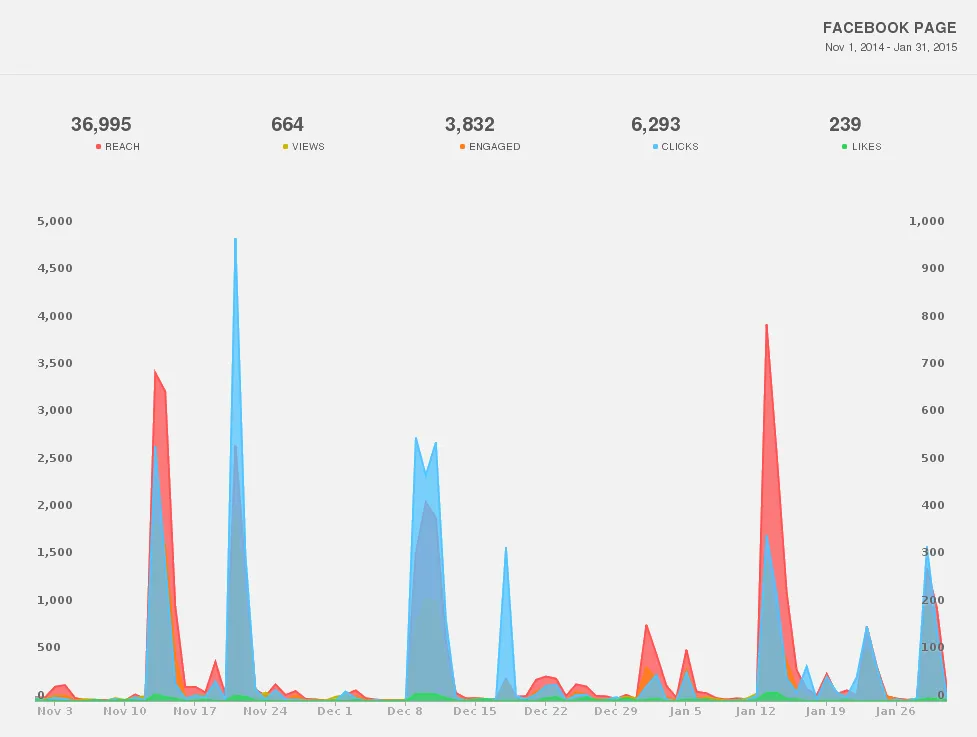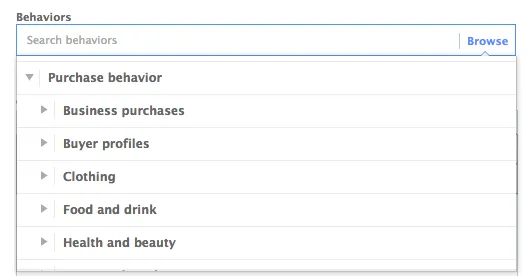5 Ways to Accelerate Your Facebook Advertising Strategy
The reach of a facebook advertising strategy is staggering. One out of every five people, approximately 20% of the world’s population, has an account.
And the incredible thing? Through their advertising platform, the social media giant has made all of their users available to marketers. Facebook advertising can be used to take advantage of huge marketing opportunities. In fact, over 86% of businesses now consider it essential to their overall marketing strategy.
In this guide we're going to look at several ways to boost the effectiveness of your company’s facebook advertising strategy. Whatever the size or demo of your market, whether you’re targeting busy execs in cities like New York and Hong Kong, or retirees in a particular geographic location, the tactics outlined here will help you improve your results.
What are the Benefits of Social Media Advertising?
It always worth reiterating some of the benefits of social media advertising. You never know when you’re going to be called on to defend a proposed strategy or pitch a new one to a reluctant CEO. There’s a multitude of reasons for adopting SMM. Here are a few of the most important:
- Paid campaigns are more controllable than those that rely on organic followings.
- You can show your content to highly-targeted people, much more so than is possible through organic reach.
- SMM can be used to compliment organic marketing, amplifying successful content and increasing the likelihood that it will go viral.
- It gives you access to a range of highly advanced targeting and analysis tools.
- If you can achieve a good ROI the whole process can be quickly and easily scaled, in contrast to organic marketing which requires that a large following be built over time.
Does it Really Work?
Before jumping into the tips themselves, let’s have a look at two interesting case studies. Both offer insights into the potential benefits of SMM and are examples of good B2C marketing.
First up is a campaign launched by Castrol MOTO, a company that produces engine oil for motorcycles. The idea was to start and grow a community of motorcycle enthusiasts and pith them Castrol products.

(Source)
The company’s reach, fanbase, and overall engagement increased dramatically after the implementation of paid SMM. The insights that were gleaned from their interactions with such a large group of people also drove cross-departmental improvements in customer understanding and fuelled engagement in future social content, as indicated in the graph below:

(Source)
Another good example is that of Savoie’s, a cajun food producer. What’s remarkable about their campaign’s success is that it was run on only $1,500. They began with 2,757 followers and an average reach per post of just under 37,000, as shown by the graph below:

(Source)
By monitoring their ads closely, dropping those that weren’t doing well compared to others and adjusting top performers, they were able to drastically improve almost all key measures. They acquired 10,600 new followers and nearly a 1000% increase in engagement.

(Source)
Both of these examples show that SMM can be used to great effect for the purposes of B2C marketing, often on small budgets. You will also notice that the two products are different, but that both were effectively promoted given the reach of Facebook’s ad platform.
1. Choose Metrics That Matter
There are lots of three letter acronyms - ROI (return on investment), CPL (cost per lead or like, depending on who you’re talking to), CPA (cost per acquisition) - to pick from when it comes to measuring your SMM efforts. Your choice of which to use and monitor will ultimately be determined by your goals. It’s important that you spend some time outlining these before you launch your campaign. They can drastically alter the approach that you take and the networks that you use.
Here are some common SMM goals:
- Generate brand awareness.
- Generate leads.
- Generate direct sales.
- Maintain relationships.
- Get feedback from the market about your products.
Once you’re clear on where you’re headed, you can start to consider individual areas of activity to measure. Social media expert Jay Baer outlines four categories of metrics that can be used to evaluate the success of a particular campaign. Broadly speaking, these are:
- Consumption Metrics: Essentially a measure of engagement, these numbers refer to the quantity of people that have read, listened to or watched your content.
- Sharing Metrics: A measure of your content’s shareability.
- Lead-gen Metrics: How often does a single instance of engagement result in a lead?
- Sales metrics: How often does a single instance of engagement result in a sale?

(Source)
It’s also important to distinguish between individual platform metrics and big-picture ones. The screenshot below, for instance, shows a typical Facebook insights dashboard, clearly detailing the reach and engagement of each post. Figures like these will dictate how you run your campaign on a day-to-day level whereas broader metrics like ROI and CPA across whole networks will come into play on a more strategic level.

(Source)
It can be argued that CPA (cost per acquisition) is the only metric that really matters. Optimizing it means paying attention to a lot of variables, often in ways that aren’t obvious. That’s why having a broad sense of the whole SMM ecosystem and monitoring individually relevant metrics is so important.
2. Run Test Social Media Campaigns
Not all platforms are created equal. With the possible exception of Facebook, which is so huge that nearly any kind of potential customer can be targeted, all networks have their own unique demographics. With this in mind, it’s important to pick out the networks that are best-suited to your particular product or service. 80% of Pinterest’s audience, for instance, is made up of women.
The diagram below gives a broad overview of the age differences between the user groups of various popular networks:

Similarly, it’s worth keeping your ear to the ground to keep up to date with opportunities in new networks. Very often, their advertising marketplaces won’t be as competitive as others. Instagram, as one example, has grown by 23% in the last six months. I bet its advertising platform hasn’t matched that pace!
3. Use Advanced Targeting Features
Part of what makes SMM so effective, when it’s done right, is the array of targeting tools that networks offer. When coupled with a solid understanding of your ideal buyer, full utilization of these tools can provide incredible returns.
Facebook expert Jon Loomer has said that, “The power of Facebook ads is found within the targeting. I don’t care how perfect the ad copy, imagery, bidding and optimization are, it’s imperative that you target the people most likely to perform your desired action.”
In particular, Facebook offer the following unique targeting options:
- Bid optimization: To use this functionality appropriately you will need to link to your goals described above. You can optimize for certain types of activity - clicks, engagement, likes, and so on. AdEspresso ran an experiment comparing the efficacy of the various optimization options and, as you can see from the graph below, the results were striking. oCPM bidding for likes resulted in almost double the amount gained from CPC bidding.

(Source)
- Custom and lookalike audiences: Custom audiences give you the ability to target people that have already visited your website. This “remarketing” is incredibly effective.

(Source)
- Previous purchases: A unique option is the ability to target users based on their purchase activity outside of Facebook. The social giant was able to offer this tool after purchasing swathes of data. This gives marketers the opportunity to pitch to users with a track record of buying products similar to theirs.

(Source)
- Devices: If you’re pitching SaaS for desktops then it’s unlikely that your core audience is going to find you through a smart-phone. Similarly, if your intended market is younger mobile-users, you’ll need to target by device accordingly. Also of particular note is the ability to offer viewers the option to download an app.

(Source)
Many other social networks offer app download ads, including Twitter, as shown below:

(Source)
- Ad Carousels/Multi-Product Ads: Ad carousels are another interesting option to try. These are particularly relevant if you’re offering digital products or SaaS as they give you the opportunity to advertise your three-tier pricing structure (if you have one, of course).

(Source)
The above examples are just some of the features that social media networks offer on their associated advertising platforms. There are lots of opportunities so it’s worth incorporating them into your testing strategy.
4. Consider Enterprise Management Software
If your company is particularly large, you may benefit from enterprise-grade social media management software. It will provide consistency across numerous departments alongside advanced analytics, publishing and response tools.
Below are a few examples of some of the solutions that are available:
- Hootsuite: Though it’s best-known as a consumer product, Hootsuite also offers an enterprise-level product. It provides advanced data, regulatory compliance and advanced data collection tools, amongst others.
- SocialCentiv: Gives you the ability to track conversations across platforms and pitch to individuals directly.
- Bottlenose: A discovery tool that allows companies to track trending topics in real time, giving them a picture of how successful their campaigns are at igniting conversations. Some pretty advanced technology here.
- Salesforce Marketing Cloud: A comprehensive management suite that is unique because of the sheer range of tools that are included.
Obviously, if the size of your company doesn’t justify this grade of management software, using a smaller service like HootSuite, SproutSocial or TweetDeck, is a viable option.
5. Use Social Advertising to Complement Organic Marketing
Social media advertising works best when it complements your organic marketing efforts. Effective SMM is all about content and insights from your organic audience will help you to determine what works and what doesn’t. It’s vital that you’re monitoring, adjusting and dropping your social media content in this regars. Over time you will be able to build a robust picture of which types of content gel with your audience and which don’t.
You can then use paid SMM to boost high-performing content, better target receptive market segments included in your current audience and gather feedback for future campaigns.
Woodbury University, for instance, used unique content to increase its followers to 76,000. That’s a huge figure when compared to other universities.

(Source)
Wrapping Up
The opportunities in SMM are immense. New ad formats, networks and analytics tools are being launched on an almost daily basis. If you’re a marketer or entrepreneur selling any kind of product or service, and you’re not taking advantage of social, then you’re almost certainly missing out.
The key, as I hope I have outlined in this post, is in adopting new technologies and implementing a well-developed analytics infrastructure. This will enable you to gain an edge on your competition. Though most businesses have some form of social strategy, very few are optimizing it for maximum effectiveness. Armed with the tools in this article, you can make sure that you don’t make that mistake.